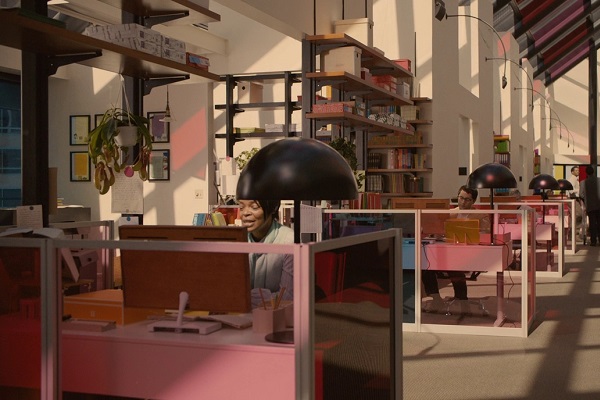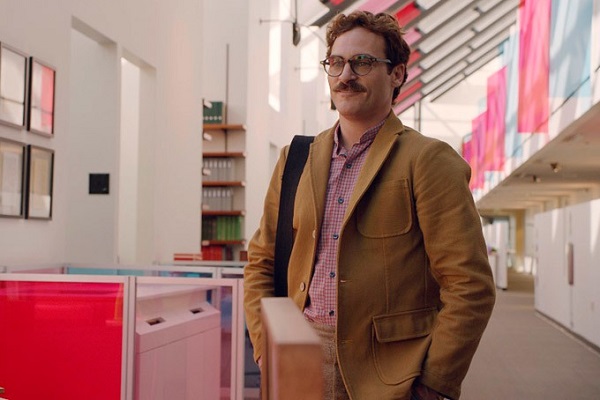


Egyptians and Romans were the first to use colours in glass to build dramatic expressions of structural spaces. Initially, coloured glass was employed in window panes to help emphasize the grandeur of upper-class Roman homes and reinforce their status. These exquisite panes of tinted glass were crafted by artisans who heated a mixture of potash and sand up to 3000 OC, combining it with a variety of metal oxides that brought out vibrant colours in the glass.
Eventually, during the 10th century, coloured glass gained religious significance with their use in Gothic cathedrals in the form of ornamental and decorative windows. In addition to its immediate visual appeal, the large panes of stained glass narrated biblical stories of the past to believers who could not read. Regular sermons were made more intelligible with Biblical characters etched in brightly coloured glass fixated all around.

© William Perry on Alamy
The intricate art of stained glass gradually declined after the Renaissance period until the mid-19th century where European artists revived the decorative tradition under the period of Art Nouveau. With technological advances, the once lost art form is now being adapted for utilitarian purposes. Coloured glass is no longer used as an ornamental element to supplement spatial aesthetics. Faster produced tinted glass panels are instead used as integral components that can solely define the essence of any built environment.

Source: Contemporist
For centuries, the bright and solemn colours of glass panes have been used in prominent architectural structures to relay stories to the masses. Even today, glass lives up to its role as a storyteller, through movies and films, instilling wonder into the viewers.
Take, for instance, the film Her by Spike Jonze, starring Joaquin Phoenix and Scarlett Johansson. Set in Los Angeles from a utopian future, this film revolves around a lonely introverted protagonist, Theodore Twombly and his romantic confrontations with an AI virtual assistant. Theodore works as a ghost-writer at a firm that uses AI-driven systems to create handwritten personalised letters on behalf of people who aren't able to do so themselves.

© Annapurna Pictures Source: Pinterest
A still from the movie Her (2013). All Rights Reserved, no copyright infringement intended.

©Annapurna Pictures Source: Archdaily
A still from the movie Her (2013). All Rights Reserved, no copyright infringement intended.
Featured throughout the film, the office is a manifestation of Barrett's contemporary vision that reimagines the cultural dialogue between people and workplaces. In vivid reds and carmines, the glass panels embody a comfortable workplace where people enjoy their time at work. Translucent panels divide the office into cubicles, but also allow light and conversations to filter through, thus creating an open and inviting atmosphere.

©Annapurna Pictures Source: IMDB
A still from the movie Her (2013). All Rights Reserved, no copyright infringement intended.
Enhancing the story in different roles, sometimes of a translucent facade, sometimes of an office partition, glass is the humble protagonist of the film. The endearing portrayal of a utopian future through opulent glass windows went on to earn Barrett his first Academy Award nomination. Much like the stained rose windows of Gothic cathedrals that once carried narratives of the past, Barrett's cerise glass panels chronicle Theodre’s vulnerable narrative of the distant future.

©Annapurna Pictures Source: IndieWire
A still from the movie Her (2013). All Rights Reserved, no copyright infringement intended.
As a building material, tinted glass stands out exceptionally etching narratives in a vibrant kaleidoscopic mixture. In both contemporary and traditional contexts, glass holds an emphatic ability to redefine habitual spaces. With its strong visual cues, tinted glass encourages users to positively interact with the building environment. Tinted glass lends itself to help tell stories of various art forms such as glazed articles, buildings, films and media making an idiosyncratic stance in the design industry.
What is the concept of the "Colored Glass Storyteller Behind the Veil"?
The concept of the "Colored Glass Storyteller Behind the Veil" explores the idea of using colored glass as a medium for storytelling in architecture and design. The use of vibrant colors and patterns in glass creates dynamic visual experiences that evoke emotions and tell a story, adding depth and character to spaces.
How does colored glass enhance architectural design?
Colored glass enhances architectural design by adding layers of color, light, and texture that can transform the mood and atmosphere of a space. It allows architects and designers to play with light and shadow, creating visually striking environments that engage and inspire.
What are some applications of colored glass in modern architecture?
Applications of colored glass in modern architecture include wall panelling, interior partitions, cabinet and wardrobe shutters and other furniture cladding. Colored glass can be used to create focal points, add privacy, or simply bring a unique aesthetic element to a building or interior space.
How does the use of colored glass affect the perception of a space?
The use of colored glass affects the perception of a space by altering the way light interacts with surfaces, creating a sense of movement and changing the way colors are perceived throughout the day. This dynamic quality adds a sense of vitality and can make a space feel more alive and engaging.
What is the significance of storytelling in architectural design with colored glass?
Storytelling in architectural design with colored glass is significant because it allows designers to convey narratives and evoke emotions through the use of light, color, and form. This approach adds a deeper level of meaning to the design, making spaces not only functional but also expressive and memorable.
Subikshaa Stalin is a designer who believes every building is not just a combination of apt spaces but an idea that captures a narrative in history waiting to be told. Read More